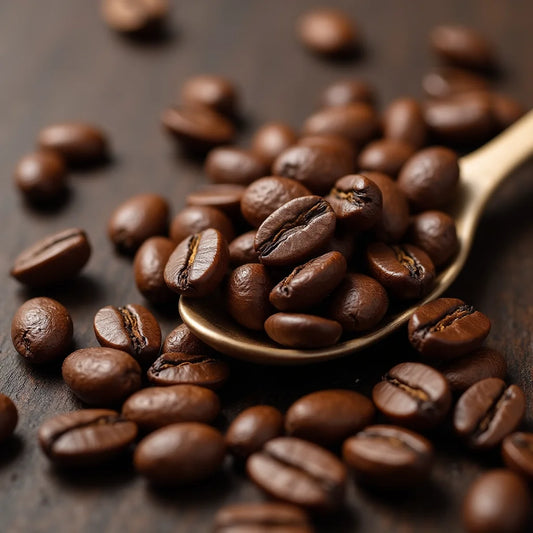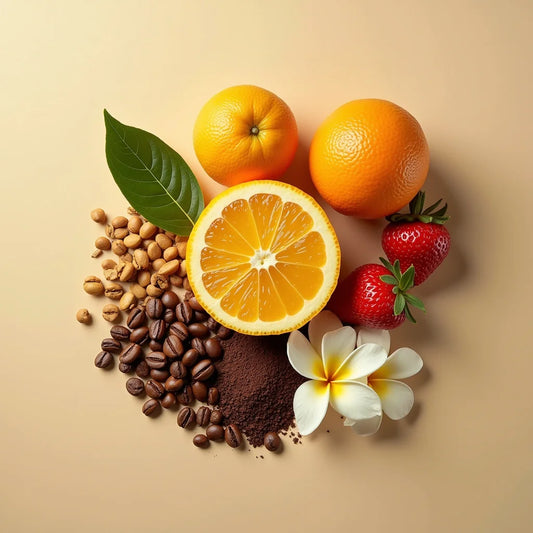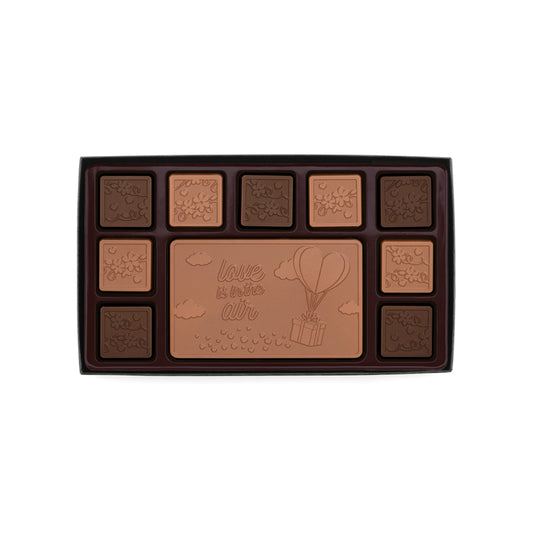
How Elevation Shapes High Altitude Coffee Flavor Notes
Updated on: 2025-10-19
- Why high altitude coffee matters for everyday brewing
- Practical guide to choosing and brewing high altitude coffee
- Key advantages of mountain-grown, high altitude coffee
- Summary and next steps for enjoying high altitude coffee
- High altitude coffee Q&A
- About the author: high altitude coffee insights by T10 T10
Why high altitude coffee matters for everyday brewing
If you love a clean, sweet cup with vibrant aromatics, high altitude coffee should be on your shortlist. In cool, thin air, coffee cherries mature slowly, building dense beans loaded with sugars and organic acids that translate into nuanced flavors in the cup. Whether you call it high-elevation coffee or mountain-grown coffee, the result is often a brighter, more complex profile—especially in Arabica coffee and single-origin coffee lots where terroir shines through. For home brewers, that means more clarity, consistent sweetness, and a better return on every minute you spend brewing.
Customers who switch from generic blends to high altitude coffee often report a “pop” of flavor: citrus lifting a chocolate base, floral notes drifting above caramel, or a tea-like finish that feels crisp rather than bitter. These notes are accessible with simple gear, and the right beans will help you unlock them without guesswork.
Practical guide to choosing and brewing high altitude coffee
What is high altitude coffee and why does it matter?
High altitude coffee refers to beans grown at higher elevations, where cooler temperatures slow growth and concentrate flavors. These conditions typically encourage Arabica coffee to express brighter acidity, deeper sweetness, and a refined body. In single-origin coffee, elevation is a key indicator of expected flavor: the higher the farm, the tighter the bean structure and the more elegant the cup can taste when brewed well.
What does this mean for you? If you enjoy layered notes—think honey, stone fruit, or citrus—high altitude coffee makes it easier to taste them without complex brewing tricks. It’s an uncomplicated path to café-level clarity at home.
At what elevation is coffee considered high altitude?
Many roasters consider coffee high altitude starting around 1,200 meters and above, with notable nuance emerging as elevations climb higher. While ranges vary by region and farm, a practical takeaway is simple: when you see elevations above 1,200 meters on a bag of coffee, expect more definition, a cleaner finish, and a livelier cup when you dial in your grind and water temperature.
How high altitude affects coffee flavor and acidity
Altitude influences flavor through slower cherry development and denser bean structure. That density helps preserve delicate aromatics during roasting, which you’ll recognize as jasmine, bergamot, cocoa nib, or ripe stone fruit—depending on origin. The acidity in mountain-grown coffee is typically bright but balanced, showing as a pleasant sparkle rather than sharpness. When brewed well, you get sweet clarity and a lingering finish, not sour edges.
Step-by-step: pour-over method for high altitude coffee
Pour-over highlights the nuance of high altitude coffee by emphasizing clarity and balance. Follow these steps for consistent results:
- Grind and dose: Use a medium grind (granulated sugar texture). Start with a 1:16 ratio—22 g coffee to 350 g water.
- Water temperature: Aim for 93–96°C. Hotter water helps extract sweetness from dense, mountain-grown beans.
- Rinse and preheat: Rinse your filter and preheat your brewer and mug to maintain stable extraction.
- Bloom: Pour 2–3 times the coffee weight in water (about 45–60 g). Let it bloom for 30–45 seconds to release CO₂.
- Main pour: Pour in slow, concentric circles to reach total water weight by 2:00–2:30 minutes.
- Drawdown: Total brew time should land around 3:00–3:30 minutes. If it runs longer, coarsen the grind; if shorter, go finer.
- Taste and adjust: If the cup is sharp, grind slightly finer or lower the water temperature. If it’s flat, grind finer or increase the dose.
Pro tip: High altitude coffee often benefits from a touch more agitation during the main pour. Try a gentle swirl midway to even the bed and brighten sweetness.
Best high altitude coffee beans for pour over: our picks
Single-origin coffee shines in pour-over when it’s grown at elevation. If you’re exploring, start with curated sets that remove guesswork and help you compare flavor profiles side by side.
- Discovery variety: Try the Single-Origin Favorites Sample Pack to taste how elevation expresses itself across origins, from floral to cocoa-rich cups.
- Balanced crowd-pleasers: The Best Sellers Sample Pack offers dependable flavor clarity with beans that perform well across pour-over and drip.
- Classic mountain-grown profile: Explore a bright, fruit-forward cup with Kenya, known for vivid acidity and layered sweetness from high-elevation terroir.
- Browse more options: Compare roast levels and origins in the full coffee collection to match your taste and brew style.
Customer note: “Switching to mountain-grown beans made my pour-over taste like a café brew at home—sweet, clean, and super aromatic.” — Jordan P.
Customer note: “I didn’t change my setup, just my beans. High altitude coffee added citrus and honey notes I’d never tasted before.” — Priya S.
Key advantages of mountain-grown, high altitude coffee
- Elevated clarity in the cup: Denser beans from high-elevation coffee brew with distinct flavors that don’t muddy together.
- Natural sweetness: Slower maturation increases sugar development, yielding a balanced, sweet cup without extra additives.
- Aromatic complexity: Expect floral, citrus, or berry notes layered over cocoa or caramel bases in Arabica coffee.
- Versatile brewing: Works beautifully in pour-over, drip, and manual espresso with the right grind adjustments.
- Consistent quality: Single-origin coffee from reputable farms provides traceable elevation and repeatable results.
- Great for tasting and learning: Elevation-linked flavor makes it easier to practice dialing in and notice improvements.
Summary and next steps for enjoying high altitude coffee
High altitude coffee offers a direct path to better flavor. Look for elevations above 1,200 meters, choose single-origin lots to showcase terroir, and brew with a medium grind and hot water for clarity. Focus on sweetness and balance—tiny adjustments to grind and temperature will unlock the cup’s full potential. If you want a no-stress starting point, compare multiple origins side by side with the Single-Origin Favorites Sample Pack, or try proven crowd-pleasers in the Best Sellers Sample Pack. For a classic mountain-grown profile, brew a bright cup from Kenya, and round out your routine by exploring the full coffee collection.
Disclaimer: Flavor notes, roast levels, and availability may vary by lot. Always follow the brewing guidance on each product page and adjust your grind, temperature, and ratio to taste.
High altitude coffee Q&A
Do I need a different grind size for high altitude coffee?
Start with your normal pour-over grind, then taste and adjust. Because high altitude coffee beans are dense, you may benefit from a slightly finer grind to fully extract sweetness. If the cup tastes sharp or thin, go a tad finer and keep water hot. If it’s bitter or heavy, go a notch coarser.
Is high altitude coffee better for pour-over or espresso?
It excels in both. Pour-over highlights clarity and aromatic layers, while espresso showcases syrupy sweetness and sparkling acidity. For espresso, consider a slightly longer ratio and finer grind to balance brightness. For pour-over, keep the brew around 3–3:30 minutes for clean structure.
How should I store mountain-grown coffee to keep flavors fresh?
Use an airtight container, away from light, heat, and moisture. Keep beans whole and grind just before brewing. Avoid the fridge or freezer unless you’re storing unopened, sealed bags you won’t use for a while. Freshness and proper storage protect the nuanced aromatics in high-elevation coffee.
Can I get the same high altitude character in decaf?
Yes, many decaf lots come from high-elevation farms and maintain sweet, clean flavor. Look for origin and elevation details on the bag. Brew with the same approach as regular beans and dial in grind to preserve clarity.
About the author: high altitude coffee insights by T10 T10
T10 T10
T10 T10 is a coffee-focused writer and product strategist who helps home brewers get café-level results with clear, practical guidance. With years spent evaluating single-origin and mountain-grown profiles, T10 translates complex variables into simple, repeatable steps. Thanks for reading—enjoy your next bright, balanced cup.














